Nafplio, capital of the prefecture of Argolida in the Peloponnese, is undoubtedly the most popular destination in the region. However, around Nafplio and a few kilometers outside it, there are several remarkable destinations that we can visit during our holidays, always having Nafplio as the starting point of our route.
Mycenae
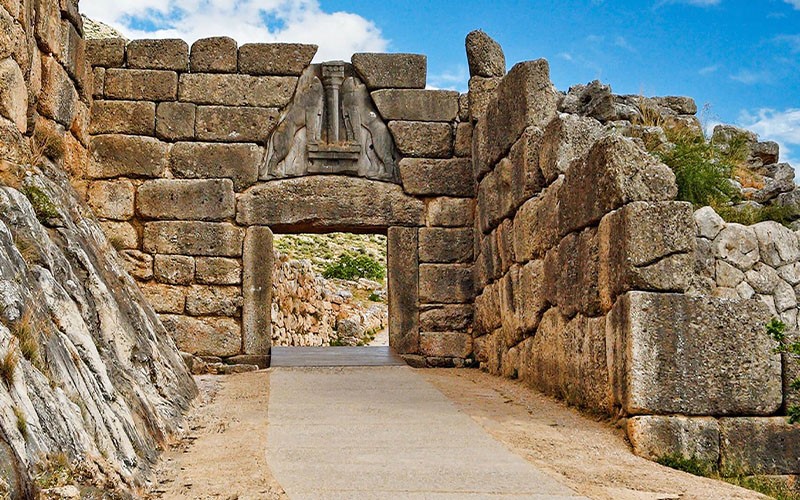
24 km outside Nafplio is the archeological site of Mycenae.
The “Multicolored Mycenae”, the kingdom of the mythical Agamemnon, is the most important and richest palace center of the Late Bronze Age in Greece. The location of the acropolis of Mycenae, which was naturally and artificially well fortified, was privileged and strategic. Thanks to this privileged position the inhabitants had under their control and regulated trade with southern Greece, Central Asia, Cyprus and Egypt.
Its famous walls and the famous Lions’ Gate are so majestic that the ancients believed that they were built by the mythical Cyclops.
The palace complexes, the cyclopean walls, the famous “Tomb of Atreus”, the huge lintels, the fountains and the bastions form one of the largest architectural complexes known to the ancient world.
Worth to visit:
Lions Gate
The main entrance, the famous Lions Gate, is a magnificent megalithic monument. It is so named because on its lintel there is a relief representation of lions.
Burial Cycle A’
A few meters after entering the citadel, you will see a circular enclosure made of stone slabs embedded vertically in the ground, the so-called burial circle A. Inside there was one of the oldest cemeteries in the city with important royal burials.
Palace
Following the main cobbled road we reach the top of the hill, where is the palace with the throne room, in which the central circular hearth is preserved.
Vaulted tombs
Just outside the walls we find the so-called vaulted tombs of Clytemnestra and Aegisthus, while about 200 meters outside the main archaeological site we find the most impressive vaulted tomb in Greece, the so-called Treasure of Atreus. All three monuments were built as the last residences of members of the royal family of Mycenae.
Archaeological Museum
It is located inside the archaeological site and includes paintings and finds from the archaeological site and material from the tombs of the greater Mycenae area, concerning life in Mycenae and burial customs.
Epidaurus
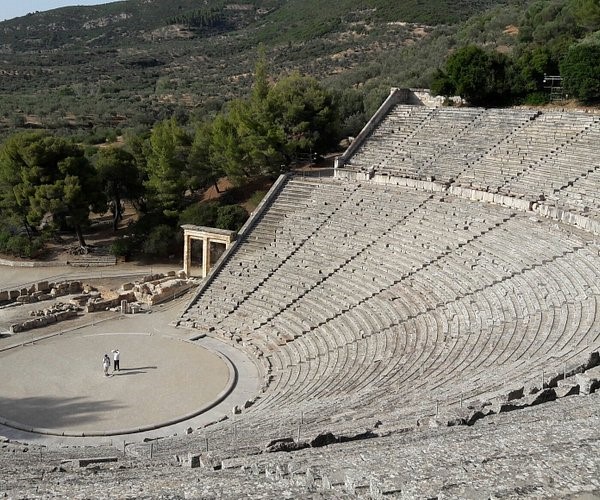
27 km outside Nafplio is Epidaurus and the ancient theater of Epidaurus.
What most people call the “Theater of Epidaurus” is what is actually located near the village of Lygourio. In the village of Old Epidaurus you will find the Small Theater of Ancient Epidaurus, which is also an archeological monument, of the same era as the “famous” theater. The area also has the village of Nea Epidavros which has places of historical interest such as the Venetian Castle.
The Ancient Theater of Epidaurus was not just a theater: It was part of the Asclepieion, the most important healing center of the entire then known world.
Today, in the archeological site where the theater is located, the impressive stage of the 5th century BC is preserved, among others. in which sports competitions were held in honor of Asclepius, the Tholos or Thymeli, which is considered the most perfect circular structure of ancient Greek architecture, and the restored Stao of Avatos.
Inside the archeological site, very close to the theater, is the Archaeological Museum of Epidaurus, which houses great finds from the excavations at the Asclepieion and the Theater.
Olympia
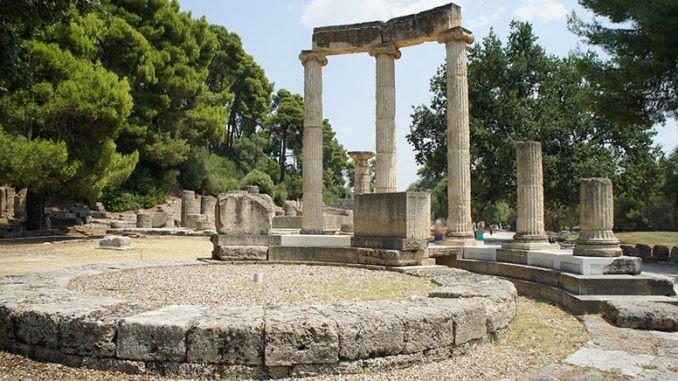
Ancient Olympia is 2.5 hours away from Nafplio.
One of the most important archeological sites in Greece, the ancient stadium marks the site where the ancient Olympic Games and Irea were held. The stadium took the form we see today at the beginning of the 5th c. BC, when the great temple of Zeus was built.
At the Archaeological Museum of Olympia is Hermes of Praxiteles, one of the most important exhibits of the museum. The god rests on a tree trunk. In his left hand, little Dionysus.
Important monuments and buildings that we find in the archeological site are the Sanctuary of Zeus, the father of the gods. Around, temples and buildings that were directly related to worship, but also buildings for the hosting and performance of the Olympic Games. In the central part, Altis, the sacred grove, in which the core of the sanctuary grows. The temple of Hera, one of the oldest examples of monumental architecture in Greece, the Bouleuterion, the Rector’s Office, the ancient High School, the Palaestra, the Workshop of Pheidias, the Leonidio, the Philippi, the Stoa of the Sound, the Pedestal of Victory , the Nymphaeum.
Monemvasia
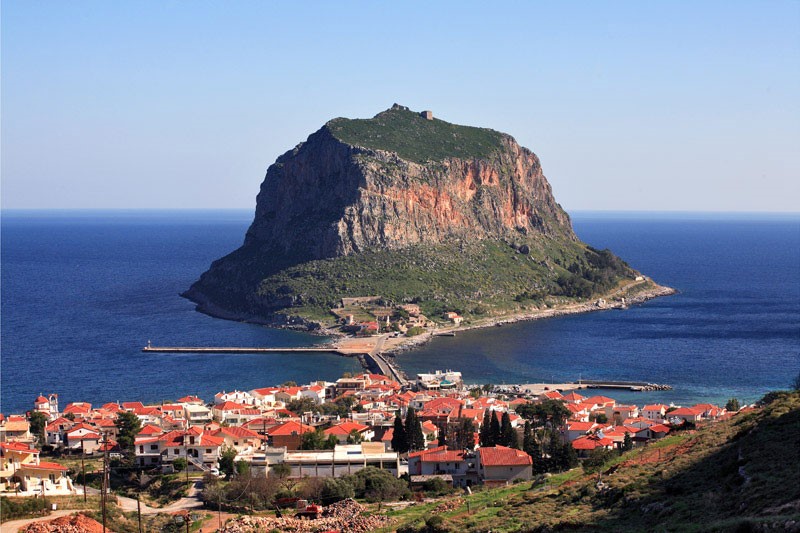
Monemvasia is 3 hours away from Nafplio. Monemvasia, the enchanting Byzantine castle city of the southeastern Peloponnese, got its name from the description the “only invasion”, ie the only entrance to the island above the bridge. The hidden city is a huge Byzantine fortress on a rock, which tore off the land after a terrible earthquake hundreds of years ago. It is worth touring the castle city, which is divided into Ano and Kato Poli, with the well-preserved stone buildings that most of them now function as accommodation and restaurants. In Kato Poli there are many historical buildings, among them a mosque where the Archaeological Collection of the settlement is now housed, as well as remarkable Byzantine churches. In Ano Poli it is worth going up to Goula (“Upper Castle”) and enjoying the unique view.
Mystras
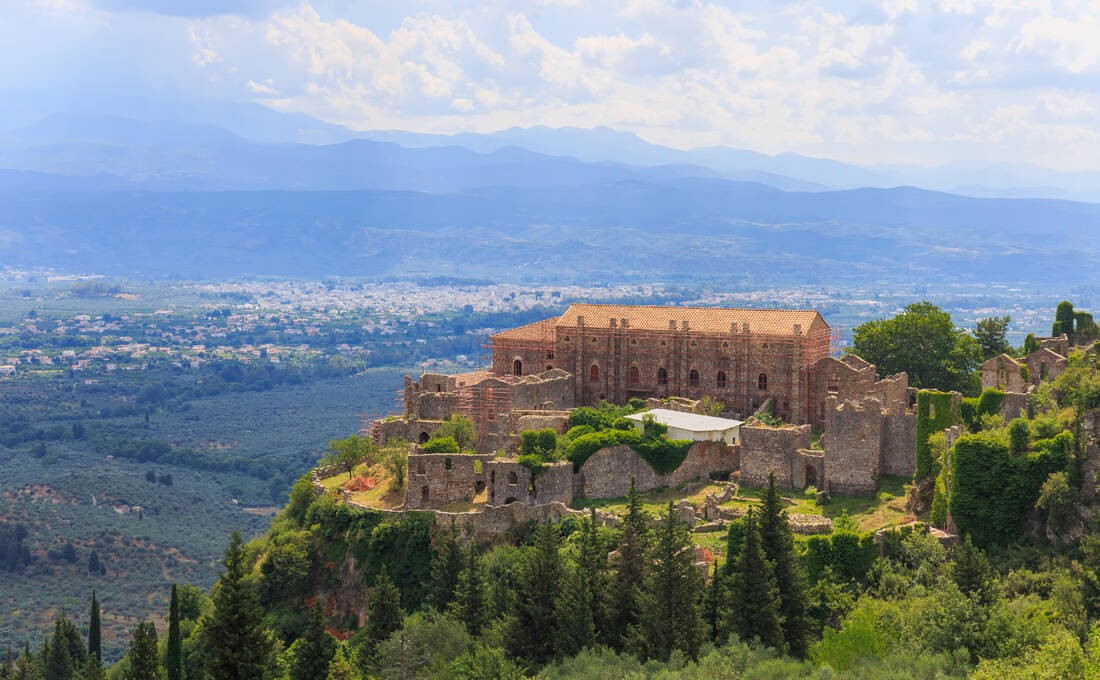
Mystras is 1.5 hours away from Nafplio. Mystras was a Byzantine state of the Peloponnese, very close to Sparta. Today it is in ruins, although some buildings have been restored, and is a valuable source for the knowledge of history, art and culture of the last two centuries of Byzantium. The castle is located on a steep hill that dominates the fertile valley of Evrotas, six kilometers west of Sparta. The foundation of Mystras is connected with the first conquest of Constantinople by the Crusaders of the Fourth Crusade in 1204. The layout of the castle is in three distinct zones, with a significant difference in altitude: Ano, Kato and Exo Chora. There is also the citadel at the top. In Ano Chora, the Palaces of the Despots stand out. In Kato Chora, the Diocese stands out, ie the church of Agios Dimitrios, where the last emperor of Byzantium, Constantine IA Palaiologos, was crowned on January 6, 1449. In Mystras there is also an archeological museum housed in a two-storey stone building of 1754, with interesting manuscripts, jewelry, reliefs and other Byzantine exhibits.
Athens
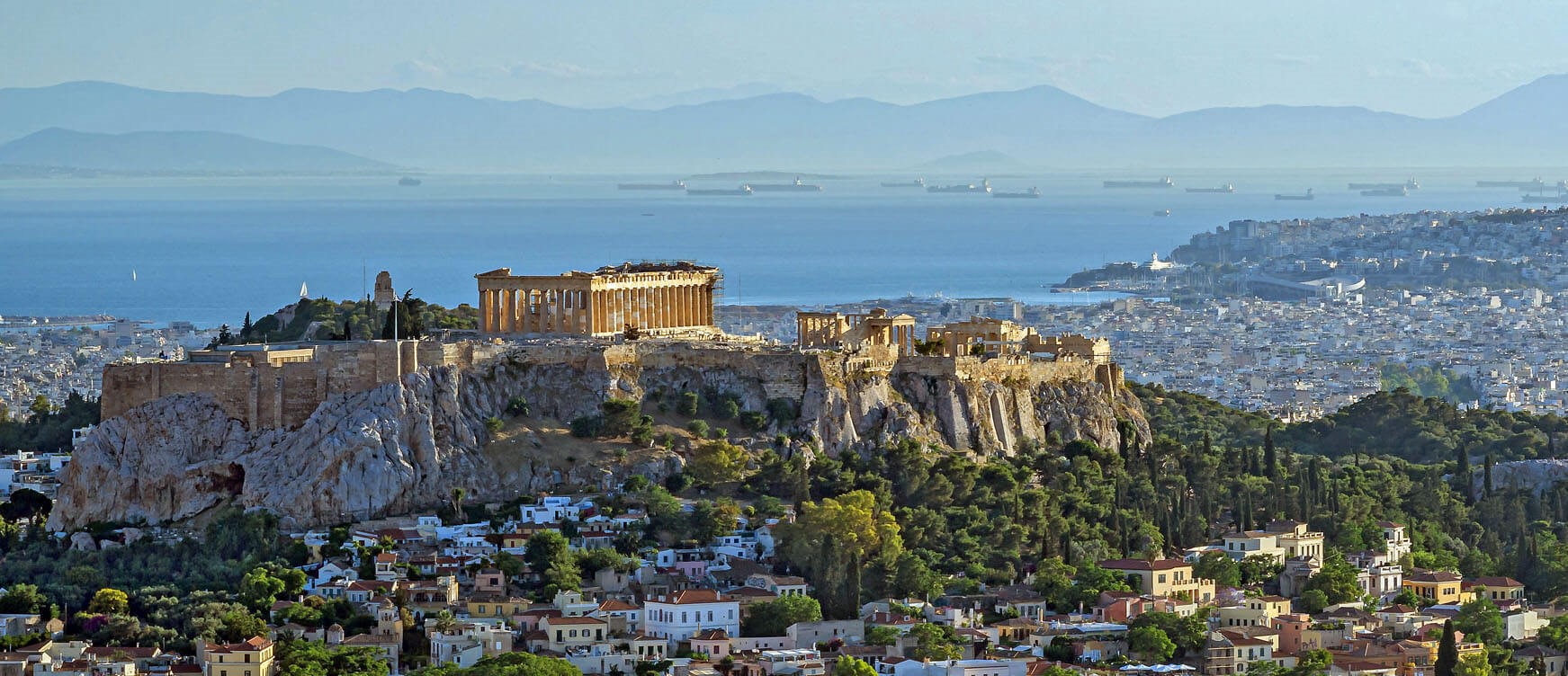
1.5 hours away from Nafplio is Athens, the capital of Greece since 1834. Athens is the historical capital of Europe, as from the Neolithic era until today it has never ceased to be inhabited. In 1834 it was declared the capital of the modern Greek state, starting from the echo of its classic past, but in the two intervening centuries it developed into a modern metropolitan center. It is the heart of the country and is an economic, industrial, political and cultural center. Counting thousands of years of history and mythology, Athens, named after the goddess Athena, is not just a big city. Athens is known around the world as the city that gave birth to democracy and laid the foundations for what we now call Western Civilization, but also as the birthplace of the Modern Olympic Games. Some important sights and places of historical interest that we can visit in Athens, are the Acropolis and the Acropolis Museum, the National Archaeological Museum, the Odeon of Herodes Atticus, the Temple of Poseidon, Lycabettus, the ancient market of Athens, the National Gallery , the Benaki Museum, the Concert Hall, the Goulandris Museum of Natural History, the Museum of Cycladic Art etc.


